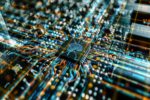
As of mid-December, 61.4% of Americans were fully vaccinated against COVID-19 — a rate that disease experts say is inadequate to eradicate the virus. But it’s far better than the shockingly low numbers of some developing countries, where vaccination rates are still in the single digits.
The underlying problem is a lack of infrastructure — specifically, transportation systems and vaccination sites that can maintain the Pfizer and Moderna vaccines at the ultracold temperatures they require to remain effective and safe.
The main method for keeping vaccines cold in outlying areas is dry ice, which has to be constantly replaced yet is in critically short supply in some areas of the world. The lack of permanent storage facilities in those locations exacerbates the problem, says Shea Vincent, senior marketing director of Stirling Ultracold, a manufacturer of ultracold-temperature freezers.
Most vaccines and other medications require some type of refrigeration, but the development of vaccines based on mRNA technology created the need for much colder environments for stability, as low as -94 degrees Fahrenheit.
“It’s been a scramble for the past two years for everyone,” says Vincent. “As we keep seeing more variants and mRNA-type vaccines coming through, it’s going to be important [to maintain ultracold environments] for future vaccinations.”
Some underdeveloped countries don’t even have the power grid necessary for running a regular refrigerator, much less an ultra-low or cryogenic freezer. Yet few if any have the capability for locally manufacturing dry ice, the solid form of carbon dioxide.
Certain countries in Africa and South America pose a particular challenge, says Vincent. In Africa, health officials have labored to set up “door-to-door” models for administering the vaccines, going from house to house with portable freezers.
The lack of a cold chain in those countries extends throughout the shipment and delivery process. But there are success stories that can serve as guidance for administering the vaccines in hard-to-reach areas.
One is Puerto Rico, whose economy is far more developed than the worst cases in Africa and South America, yet has been racked by a series of natural disasters over the past five years that made it difficult to distribute aid to citizens of the territory.
To administer the vaccines in Puerto Rico, where more than 76% of the population is now fully vaccinated, Stirling and other health professionals worked with the territory’s National Guard on the logistics end. Not knowing which brand of vaccine they would be receiving, they had to remain flexible in their methods, creating storage solutions that ran the gamut of temperature requirements.
Stirling established a hub-and-spoke model for distribution, fanning out across the island and setting up vaccine sites in local schools and community centers, to which the drugs were conveyed in refrigerated containers the size of a beach cooler.
Mobility was essential, Vincent says. The coolers, each of which stores 6,000 doses of the vaccine, can be powered by car and truck batteries.
Dry ice was needed as well, but Vincent says it’s most effective for limited transportation runs between two points. “You also need some sort of long-term storage at both ends,” he says. “Ten pounds of dry ice gives you 24 hours [of temperature protection]. You can’t administer 6,000 doses in that time.”
Replicating that model in less-developed countries “is a work in progress,” says Vincent. Stirling is working closely with UNICEF to obtain an approved supplier number for providing its equipment to targeted countries, with the help of funding from the World Bank. Recently the company sent 32 of its portable coolers to Malawi, where just 3.5% of the population is fully vaccinated. They will link up with a number of freezer farms, as far away as Amsterdam, for long-term storage. In the distribution effort, Stirling has also received help from UPS Healthcare, which has been “a great partner,” Vincent says.
The true long-term solution, of course, is to create vaccine-manufacturing capability within developing countries, coupled with ultracold storage capability, rather than rely on shipments from the developed world. But that plan presents a whole other set of challenges. “If we’re not talking about having power to even vaccinate the masses,” says Vincent, “trying to set up power for a manufacturing facility is even more of an undertaking.
“I hope that’s not too far in the future,” he adds, “but the immediate call to action is just trying to get the vaccines delivered.”
As of mid-December, 61.4% of Americans were fully vaccinated against COVID-19 — a rate that disease experts say is inadequate to eradicate the virus. But it’s far better than the shockingly low numbers of some developing countries, where vaccination rates are still in the single digits.
The underlying problem is a lack of infrastructure — specifically, transportation systems and vaccination sites that can maintain the Pfizer and Moderna vaccines at the ultracold temperatures they require to remain effective and safe.
The main method for keeping vaccines cold in outlying areas is dry ice, which has to be constantly replaced yet is in critically short supply in some areas of the world. The lack of permanent storage facilities in those locations exacerbates the problem, says Shea Vincent, senior marketing director of Stirling Ultracold, a manufacturer of ultracold-temperature freezers.
Most vaccines and other medications require some type of refrigeration, but the development of vaccines based on mRNA technology created the need for much colder environments for stability, as low as -94 degrees Fahrenheit.
“It’s been a scramble for the past two years for everyone,” says Vincent. “As we keep seeing more variants and mRNA-type vaccines coming through, it’s going to be important [to maintain ultracold environments] for future vaccinations.”
Some underdeveloped countries don’t even have the power grid necessary for running a regular refrigerator, much less an ultra-low or cryogenic freezer. Yet few if any have the capability for locally manufacturing dry ice, the solid form of carbon dioxide.
Certain countries in Africa and South America pose a particular challenge, says Vincent. In Africa, health officials have labored to set up “door-to-door” models for administering the vaccines, going from house to house with portable freezers.
The lack of a cold chain in those countries extends throughout the shipment and delivery process. But there are success stories that can serve as guidance for administering the vaccines in hard-to-reach areas.
One is Puerto Rico, whose economy is far more developed than the worst cases in Africa and South America, yet has been racked by a series of natural disasters over the past five years that made it difficult to distribute aid to citizens of the territory.
To administer the vaccines in Puerto Rico, where more than 76% of the population is now fully vaccinated, Stirling and other health professionals worked with the territory’s National Guard on the logistics end. Not knowing which brand of vaccine they would be receiving, they had to remain flexible in their methods, creating storage solutions that ran the gamut of temperature requirements.
Stirling established a hub-and-spoke model for distribution, fanning out across the island and setting up vaccine sites in local schools and community centers, to which the drugs were conveyed in refrigerated containers the size of a beach cooler.
Mobility was essential, Vincent says. The coolers, each of which stores 6,000 doses of the vaccine, can be powered by car and truck batteries.
Dry ice was needed as well, but Vincent says it’s most effective for limited transportation runs between two points. “You also need some sort of long-term storage at both ends,” he says. “Ten pounds of dry ice gives you 24 hours [of temperature protection]. You can’t administer 6,000 doses in that time.”
Replicating that model in less-developed countries “is a work in progress,” says Vincent. Stirling is working closely with UNICEF to obtain an approved supplier number for providing its equipment to targeted countries, with the help of funding from the World Bank. Recently the company sent 32 of its portable coolers to Malawi, where just 3.5% of the population is fully vaccinated. They will link up with a number of freezer farms, as far away as Amsterdam, for long-term storage. In the distribution effort, Stirling has also received help from UPS Healthcare, which has been “a great partner,” Vincent says.
The true long-term solution, of course, is to create vaccine-manufacturing capability within developing countries, coupled with ultracold storage capability, rather than rely on shipments from the developed world. But that plan presents a whole other set of challenges. “If we’re not talking about having power to even vaccinate the masses,” says Vincent, “trying to set up power for a manufacturing facility is even more of an undertaking.
“I hope that’s not too far in the future,” he adds, “but the immediate call to action is just trying to get the vaccines delivered.”







